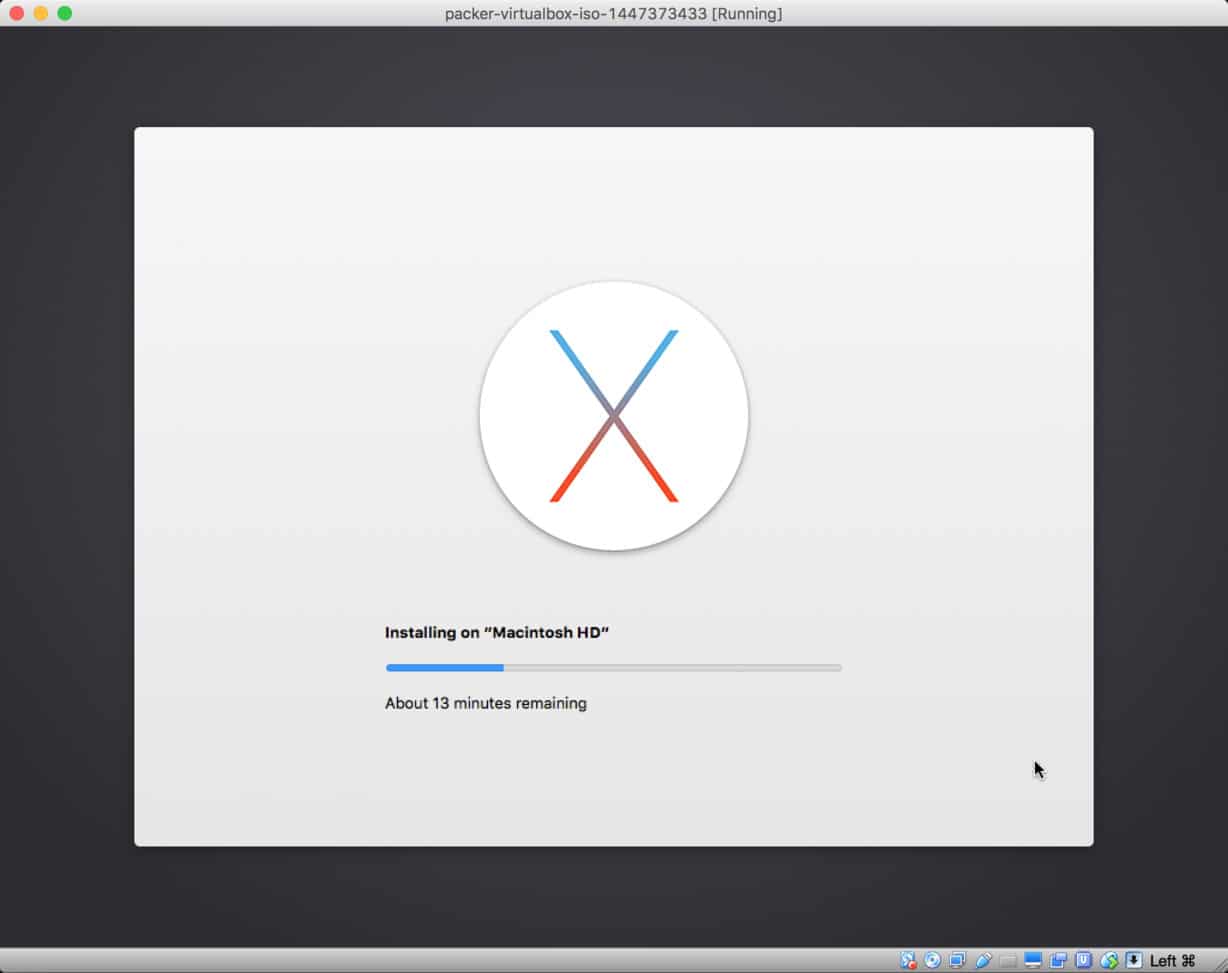
vagrant up You can ssh into the machine now. vagrant init precise64 Now lets start the machine using the following command. Then well initialize the vagrant machine. If you’d like to learn more about Vagrant, see the documentation, or read a book or two. vagrant box add precise64 You can find more boxes at Vagrant Cloud Now create a test directory and cd into the test directory. I’ll also post a tutorial on using Ansible to configure macOS.
#Vagrant mac os x vm how to
I’ll update the site with instructions on how to run Catalina as well. setup a cent-os box from vagrantcloud mkdir /vagrant cd /vagrant mkdir centos cd centos vagrant init chef/centos-6.5 A Vagrantfile has been placed in this directory. When this article was published macOS Catalina had already been released. To destroy the virtual machine, simply run (while standing in the directory of your Vagrantfile, in our example ~/macos-vagrant): $ vagrant destroy
#Vagrant mac os x vm install
Install macinbox using gem, the Ruby package manager: $ sudo gem install macinboxĬreate a directory to store your macOS Vagrant related files, and $ mkdir ~/macos-vagrantįinally, to start the VM with Vagrant, run: $ vagrant up Vagrant was started back at 2010 by Mitchell Hashimoto as a side project and later became one of. Vagrant acts as a glue layer between different virtualization solutions (Software, hardware PaaS and IaaS) and different configuration management utilities (Puppet, Chef, etc'). Get the macOS Mojave Installer Applicationįollow this link to go to the Mac App Store and download and install the macOS Mojave Installer. Vagrant is a multi-platform command line tool for creating lightweight, reproducible and portable virtual environments. Install Homebrew and then install Vagrant: $ /usr/bin/ruby -e "$(curl -fsSL )" Starting and stopping the VM will stop the runaway CPU but it will go back to 100 within the same time period again. Within 15-60 minutes of starting up a VM, the host CPU ramps up to 100 CPU usage while the guest is idle.
#Vagrant mac os x vm mac os x
Since the macOS EULA only allows running macOS VMs on a genuine Mac, you’ll need an iMac, MacBook Pro, Mac Mini or other Mac. I am running vagrant on a Mac OS X (10.10.3) host system. To create the VM, you can either download a pre-built Lubuntu 18.04 image (note the user name/password) or manually create an VM and install the operating system yourself. This tutorial will make use of macinbox by bacongravy. If you have trouble with Vagrant below, one fallback option is to just run VirtualBox alone and use its interface for all VM-related tasks.

This tutorial assumes you have a working installation of macOS Mojave or later running on a Mac, and that you have VirtualBox and the VirtualBox Extension Pack installed. I’ve mainly used this for development and testing of Ansible playbooks targeted at configuring headless app builders for iOS devices and Macs. This tutorial will guide you through the process of running macOS Mojave in a VM using Vagrant. Editing file /etc/hosts Host Database localhost is used to configure the loopback interface when the system is booting.


 0 kommentar(er)
0 kommentar(er)
